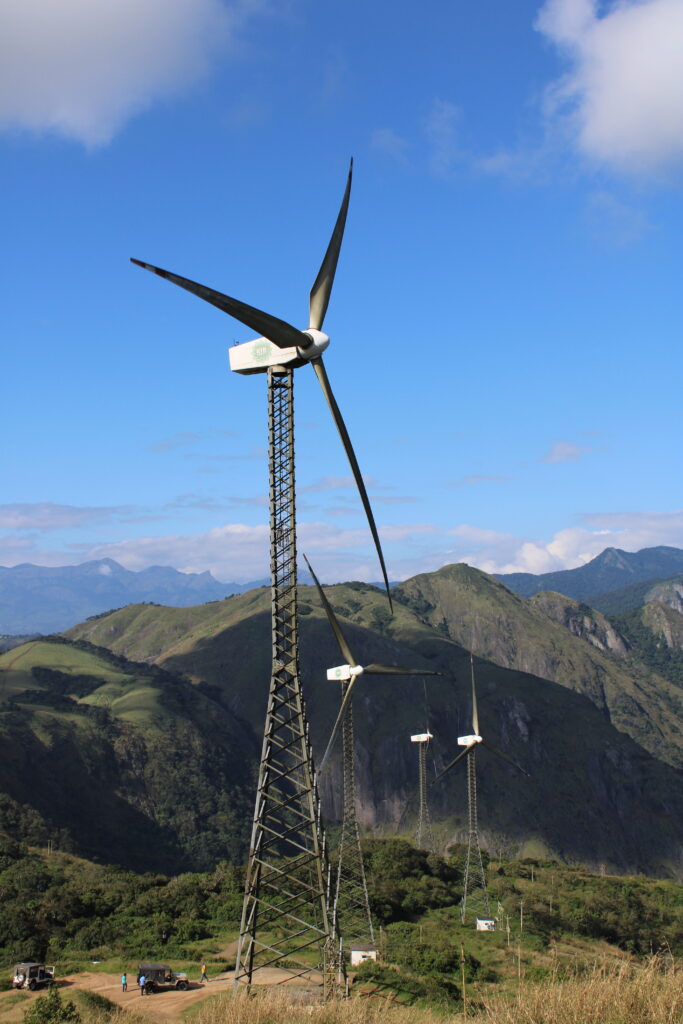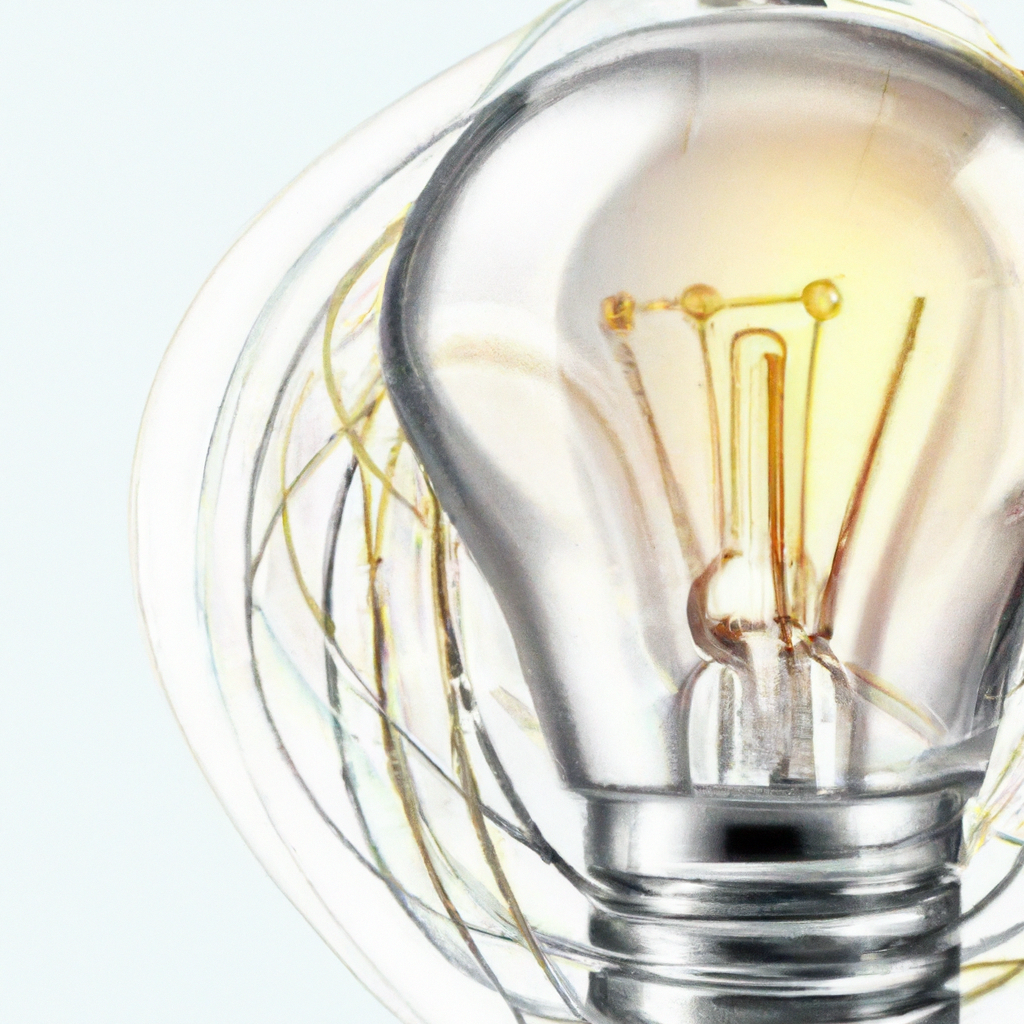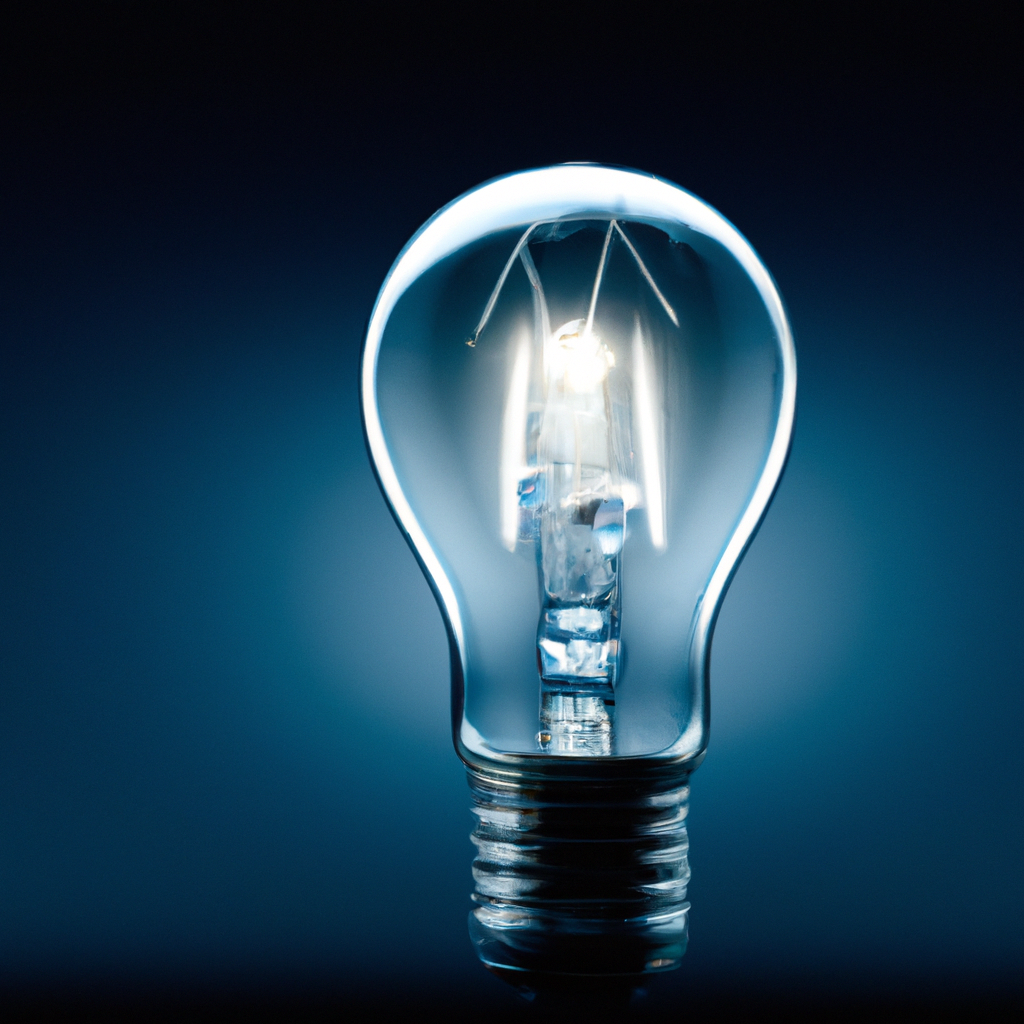Imagine a world where your light bulbs automatically adjust their brightness based on your natural lighting needs, or where you can control your lights with a simple voice command. These scenarios might seem like something out of a futuristic movie, but with the advent of smart light bulbs, they are becoming increasingly common. But aside from the convenience and modernity they bring, are there any tangible energy-saving advantages to using these smart bulbs? In this article, we will explore the potential benefits of smart light bulbs in reducing energy consumption and lowering your utility bills. So, sit back and let’s shed some light on this intriguing topic.
Introduction
Smart light bulbs have become increasingly popular in recent years, offering a range of benefits that extend beyond just illuminating a room. These advanced lighting solutions incorporate technology that allows for energy efficiency, remote control and automation, advanced features, energy monitoring, compatibility and connectivity, cost considerations, environmental impact, monitoring and security concerns, and public perception and adoption. In this article, we will explore each of these aspects in detail to understand the energy-saving advantages of using smart light bulbs.
1. Energy Efficiency
1.1 LED Technology
One of the primary reasons why smart light bulbs are energy-efficient is their utilization of LED (Light Emitting Diode) technology. LED bulbs consume significantly less energy compared to traditional incandescent bulbs, resulting in reduced electricity bills. Additionally, LEDs have a longer lifespan, which means less frequent replacement and less waste. By transitioning to smart LED bulbs, you can save energy and contribute to a greener future.
1.2 Dimming and Brightness Control
Smart light bulbs often come with dimming capabilities and brightness control, allowing you to customize the lighting intensity according to your preferences. This feature enables you to lower the brightness when full illumination is unnecessary, saving energy in the process. Whether you desire ambient lighting for relaxation or brighter lighting for focused tasks, dimming and brightness control options enhance energy efficiency by reducing unnecessary energy consumption.
1.3 Motion Sensors and Timers
Another energy-saving advantage of smart light bulbs is the integration of motion sensors and timers. These features ensure that lights are only switched on when needed, and automatically turn off when no motion is detected for a certain period. Motion sensors are particularly useful in areas such as hallways, bathrooms, and closets where lights may accidentally be left on. By utilizing motion sensors and timers, you can minimize energy wastage and optimize energy consumption.

2. Remote Control and Automation
2.1 Convenience and Flexibility
Smart light bulbs offer the convenience of remote control, allowing you to turn lights on or off, and adjust settings from anywhere using your smartphone or a dedicated remote control device. This feature enables you to ensure that lights are not left on when you are away from home, eliminating unnecessary energy consumption. Additionally, remote control eliminates the need to physically interact with light switches, reducing the risk of accidentally leaving lights on and contributing to energy efficiency.
2.2 Integration with Other Smart Devices
Smart light bulbs can seamlessly integrate with other smart devices in your home, such as smart thermostats, smart speakers, and smart home assistants. This integration enables automation and synchronization between various devices, optimizing energy usage. For example, you can set up a scenario where the lights automatically turn off when the smart thermostat detects that you have left the house. By integrating smart light bulbs with other devices, you can create a more energy-efficient and interconnected living environment.
2.3 Energy Management and Optimization
Many smart light bulb systems include energy management features that provide insights into your energy consumption patterns. Through detailed energy reports and analytics, you can identify areas of improvement and optimize your lighting usage. By understanding your energy consumption habits, you can make informed decisions to reduce energy usage and further enhance energy efficiency.
3. Advanced Features
3.1 Color Temperature Adjustment
Smart light bulbs often offer the ability to adjust the color temperature of the lighting. This feature allows you to create the desired ambiance in your space while potentially saving energy. By using cooler light in the mornings and evenings, you can simulate natural daylight and potentially reduce the need for additional lighting sources. Adjusting the color temperature not only affects the lighting aesthetics but also contributes to energy conservation.
3.2 Personalized Lighting Scenes
With smart light bulbs, you can create personalized lighting scenes tailored to different activities and moods. Whether you want bright lighting for work or a cozy atmosphere for relaxation, you can program different lighting settings and easily switch between them. This feature ensures that you are using the appropriate amount of light for each situation, promoting energy efficiency by preventing unnecessary energy consumption.
3.3 Smart Scheduling and Geofencing
Smart light bulbs often support scheduling features that allow you to automate lighting according to your daily routines. You can set specific times for lights to turn on or off, ensuring that they are only in use when needed. Additionally, geofencing technology enables lights to automatically react to your location. For example, the lights can turn on as you approach your home and turn off when you leave. By utilizing smart scheduling and geofencing, you can optimize energy usage and minimize wastage.

4. Energy Monitoring and Reporting
4.1 Real-Time Energy Consumption
One of the key advantages of smart light bulbs is the ability to monitor real-time energy consumption. With the help of companion apps or dedicated energy monitoring devices, you can track the energy usage of your smart bulbs, gain insights into real-time power consumption, and identify areas where energy consumption can be reduced. Real-time monitoring empowers you to make immediate adjustments and better manage your energy consumption.
4.2 Historical Data and Analysis
In addition to real-time monitoring, smart light bulbs often provide historical data and analysis of your energy consumption. By reviewing this data, you can identify usage patterns and trends over time. This information allows you to make informed decisions by pinpointing periods of high energy usage and taking steps to reduce energy consumption during those times. Historical data and analysis enable continuous improvement in energy efficiency.
4.3 Insights for Efficiency Improvements
With access to real-time and historical energy consumption data, smart light bulbs can provide insights and recommendations for efficiency improvements. These recommendations may include suggestions for adjusting lighting settings, adopting energy-saving practices, or even upgrading to more energy-efficient bulbs. By leveraging these insights, you can actively work towards reducing energy consumption and decreasing your carbon footprint.
5. Compatibility and Connectivity
5.1 Smart Home Platforms
Smart light bulbs are designed to integrate seamlessly with popular smart home platforms such as Amazon Alexa, Google Assistant, and Apple HomeKit. This compatibility allows you to control your smart bulbs using voice commands and easily incorporate them into your existing smart home ecosystem. By leveraging the connectivity with these platforms, you can enhance the overall energy efficiency of your smart home.
5.2 Wireless Protocols
Smart light bulbs utilize wireless protocols such as Wi-Fi, Bluetooth, or Zigbee for communication and control. These wireless capabilities enable easy installation and flexibility in terms of device placement. Additionally, wireless connectivity allows for remote control and automation, ensuring that you have full control over your lighting from anywhere. The convenience and flexibility offered by these wireless protocols contribute to energy efficiency by promoting efficient and effortless control of your smart light bulbs.
5.3 Voice Control Integration
Voice control integration is a key feature of smart light bulbs, enabling hands-free operation and further enhancing convenience and accessibility. By connecting your smart bulbs to voice assistants such as Amazon Alexa or Google Assistant, you can control your lights with simple voice commands. Voice control eliminates the need to physically interact with switches or controllers, reducing the chances of leaving lights on and improving energy efficiency.

6. Cost Considerations
6.1 Initial Investment
While smart light bulbs can be a significant upfront investment compared to traditional bulbs, they can provide cost savings in the long run. Although the initial cost may be higher, the energy savings realized over time can offset the initial expense. Additionally, the extended lifespans of smart bulbs reduce the frequency of bulb replacements, resulting in additional savings in the long term.
6.2 Lifespan and Durability
Smart light bulbs, particularly those that use LED technology, have a longer lifespan compared to traditional bulbs. LED bulbs can last up to 50,000 hours, significantly longer than incandescent bulbs. This longevity ensures that you won’t have to frequently replace your bulbs, reducing both maintenance costs and waste. The durability of smart bulbs also makes them resistant to shocks and vibrations, further increasing their lifespan and reducing replacement costs.
6.3 Potential Energy Savings
The energy-saving advantages of smart light bulbs can result in significant cost savings over time. By optimizing energy usage, utilizing features such as dimming and scheduling, and monitoring and managing energy consumption, you can reduce your electricity bills. While the exact savings will depend on factors such as usage patterns and local energy rates, smart light bulbs have the potential to deliver long-term cost savings by minimizing energy wastage.
7. Environmental Impact
7.1 Reduced Carbon Footprint
Switching to smart light bulbs can have a positive impact on the environment by reducing carbon emissions. LED bulbs consume less energy, resulting in lower electricity demand from power plants, many of which rely on fossil fuel sources. By using energy-efficient LED technology, smart light bulbs help decrease carbon dioxide emissions and mitigate climate change. Choosing smart lighting solutions contributes to a more sustainable future for generations to come.
7.2 Waste Reduction
Traditional incandescent bulbs often contribute to significant waste due to their shorter lifespan and increased frequency of replacements. In contrast, smart light bulbs, particularly those utilizing LED technology, have an extended lifespan, reducing the need for frequent replacements. By reducing the number of discarded bulbs, smart lighting solutions contribute to waste reduction and promote a greener environment.
7.3 Sustainable Manufacturing
The manufacturing process of smart light bulbs, especially those with energy-efficient LED technology, has become more sustainable over the years. Increased focus on environmentally friendly manufacturing practices, such as reducing water and energy usage and minimizing waste generation, ensures that smart bulbs have a smaller ecological footprint. By choosing smart light bulbs, you are supporting sustainable manufacturing practices and fostering a more eco-friendly lighting industry.

8. Monitoring and Security Concerns
8.1 Privacy Protection
With the increasing adoption of smart devices, including smart light bulbs, privacy concerns have become more prevalent. Smart light bulbs may require access to personal information, such as location data, in order to provide features like geofencing or integration with voice assistants. It is important to choose reputable brands that prioritize user privacy and employ robust security measures to protect your personal data. Reading privacy policies and ensuring that adequate safeguards are in place is crucial to maintaining privacy when using smart light bulbs.
8.2 Vulnerabilities and Risks
As with any connected device, smart light bulbs can be susceptible to vulnerabilities and security risks. Poorly implemented security measures or outdated firmware can expose your smart bulbs to potential hacking or unauthorized access. It is essential to regularly update the firmware of your smart bulbs and ensure that strong passwords are used to protect your smart home network. By maintaining strong security practices, you can minimize the risks associated with smart light bulbs.
8.3 Data Encryption and Security Measures
To safeguard user data and ensure secure communication, reputable smart light bulb manufacturers implement data encryption and other security measures. These measures protect the data transmitted between the smart bulbs, companion apps, and other connected devices. When considering smart light bulbs, it is important to choose brands that prioritize data security and employ encryption protocols to protect your personal information.
9. Public Perception and Adoption
9.1 Consumer Awareness and Education
The adoption of smart light bulbs and other smart devices depends on consumer awareness and education regarding their benefits and features. As more information becomes available through marketing efforts, online resources, and word-of-mouth testimonials, consumers are becoming more knowledgeable about the energy-saving advantages of smart light bulbs. Increased consumer awareness fosters informed decision-making and promotes the adoption of these energy-efficient lighting solutions.
9.2 Government Initiatives and Incentives
Government initiatives and incentives supporting energy efficiency play a crucial role in increasing the adoption of smart light bulbs. Various governments offer incentives such as tax rebates or subsidies to encourage the use of energy-saving technologies. Through these programs, consumers are incentivized to choose smart lighting solutions, further promoting energy efficiency and reducing overall energy consumption.
9.3 Market Trends and Growth
The market for smart light bulbs and other smart home devices continues to grow at a rapid pace. Technological advancements and increased consumer demand drive ongoing innovation in the industry. As more consumers embrace the convenience, energy savings, and environmental benefits of smart lighting, the market is expected to experience sustained growth. The evolving market trends reflect a shift towards energy-efficient lighting solutions and a greater emphasis on sustainability.
In conclusion, smart light bulbs offer a multitude of energy-saving advantages that extend beyond traditional lighting solutions. From LED technology and dimming capabilities to remote control and automation, advanced features, energy monitoring, compatibility, and connectivity, these innovative lighting solutions empower homeowners with enhanced energy efficiency. Considering cost considerations, environmental impact, monitoring and security concerns, and public perception and adoption, it is evident that smart light bulbs are an energy-efficient and sustainable choice for modern lighting needs. Embracing this technology not only contributes to personal energy savings but also advances the collective goal of achieving a greener and more sustainable future.











